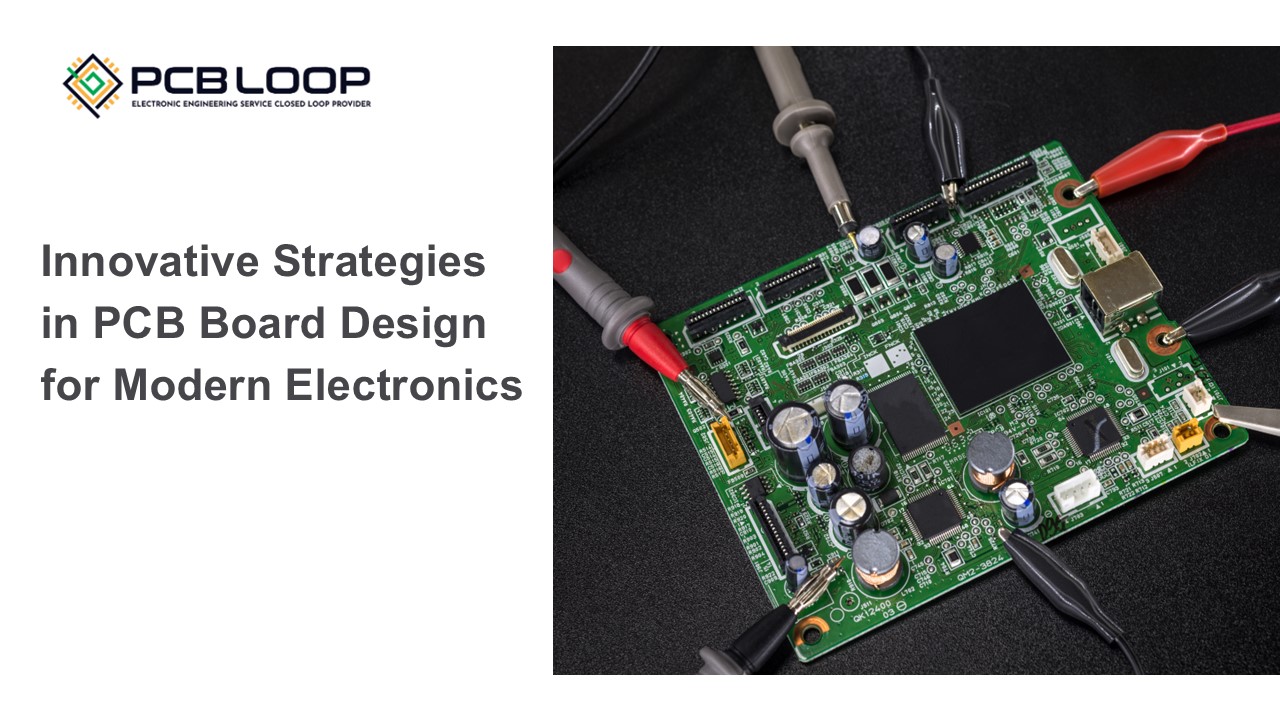Mastering PCB Board Design: A Comprehensive Approach - PowerPoint PPT Presentation
Title:
Mastering PCB Board Design: A Comprehensive Approach
Description:
A successful electronic product relies heavily on a well-thought-out PCB board design. PCBLOOP is committed to providing cutting-edge design solutions that cater to the diverse needs of our clients. Our team is skilled in creating layouts that maximize space and improve signal integrity, ensuring that your circuits operate with optimal efficiency. We handle every aspect of the design process, from schematic capture to component placement, focusing on reducing noise and potential interference. With PCB board design playing a crucial role in the final product’s performance, partnering with experts like PCBLOOP ensures a smooth transition from design to manufacturing. – PowerPoint PPT presentation
Number of Views:2
Title: Mastering PCB Board Design: A Comprehensive Approach
1
Innovative Strategies in PCB Board Design for
Modern Electronics
2
We introduce the concept of printed circuit
boards (PCBs) and their critical role in modern
electronic devices. PCB board design serves as
the backbone of most electronic applications,
providing a platform for the physical support and
electrical connections of components.
Understanding PCB board design is essential for
anyone involved in electronics, as it lays the
foundation for functionality, reliability, and
performance in devices ranging from simple
household items to complex industrial machinery.
Introduction to PCB Board Design
3
Types of PCBs
Diving into the various types of PCBs, we first
discuss single-sided PCBs, which are
characterized by having electronic components
mounted on one side of the board. This type is
typically used in basic applications where space
and complexity are limited. Next, we explore
double-sided PCBs, which feature components on
both sides, allowing for a greater density of
parts and more complex circuitry. Multilayer PCBs
come into play when the demand for high-density
applications arises they consist of several
layers of circuitry, enhancing functionality
while maintaining a compact size. Lastly, we look
at flexible PCBs, which are designed to bend and
conform to specific shapes, making them suitable
for applications in wearable technology and
compact devices.
4
PCB Board Design Process Overview
The PCB board design process involves several key
steps. The journey begins with schematic capture,
where engineers create a visual representation of
the circuit. This is followed by PCB layout
design, which involves the physical arrangement
of components and electrical pathways on the
board. After the layout is complete, a design
rule check (DRC) ensures that the design adheres
to specific rules and standards to prevent issues
during manufacturing. The final step involves
generating Gerber files, which are essential for
PCB board fabrication as they detail the layers,
drill holes, and other crucial specifications
required by manufacturers.
5
Key Components in PCB Board Design
When discussing key components in PCB board
design, it is essential to highlight the
fundamental elements that make up a PCB.
Resistors, capacitors, integrated circuits (ICs),
and connectors are some of the critical
components that engineers must carefully consider
during the design process. Each of these
components plays a specific role in the circuit's
functionality, and their arrangement can
significantly affect the performance of the final
product. Additionally, the design of traces the
electrical paths on the PCB is crucial for
ensuring efficient signal flow and power
distribution throughout the board.
6
Tools and Software for PCB Board Design
In today's digital age, various tools and
software have emerged to aid engineers in PCB
board design. Prominent software options include
Altium Designer, Eagle, KiCAD, and OrCAD. Each of
these tools offers unique features tailored to
different aspects of PCB board design, such as
schematic capture, layout design, and simulation
capabilities. When selecting PCB board design
software, engineers should consider factors such
as ease of use, available features, and
compatibility with manufacturing processes to
ensure a smooth workflow.
7
Best Practices in PCB Board Design
Adhering to best practices in PCB board design is
vital for achieving optimal results. Engineers
should focus on component placement, ensuring
that parts are positioned in a way that maximizes
performance while facilitating manufacturability.
Understanding trace width and spacing is crucial
for maintaining signal integrity and managing
current capacity. The use of ground planes is
recommended to reduce noise and improve signal
stability, particularly in high-speed
applications. Additionally, incorporating testing
points into the design can streamline
troubleshooting processes, making it easier to
diagnose issues that may arise after
manufacturing.
8
Conclusion
PCB board design is a foundational aspect of
modern electronics that directly impacts
functionality, reliability, and performance. With
various types of PCBs available, engineers can
select the best option for their specific
applications. The design process involves several
steps, each requiring careful consideration to
ensure successful outcomes. As technology
advances, staying informed about emerging trends
and best practices in PCB board design will be
essential for engineers in this ever-evolving
field.
9
Contact Us Now
Phone Number
1 917-539-2128
Email Id
support_at_pcbloop.com
Website Address
www.pcbloop.com
10
Thank You































